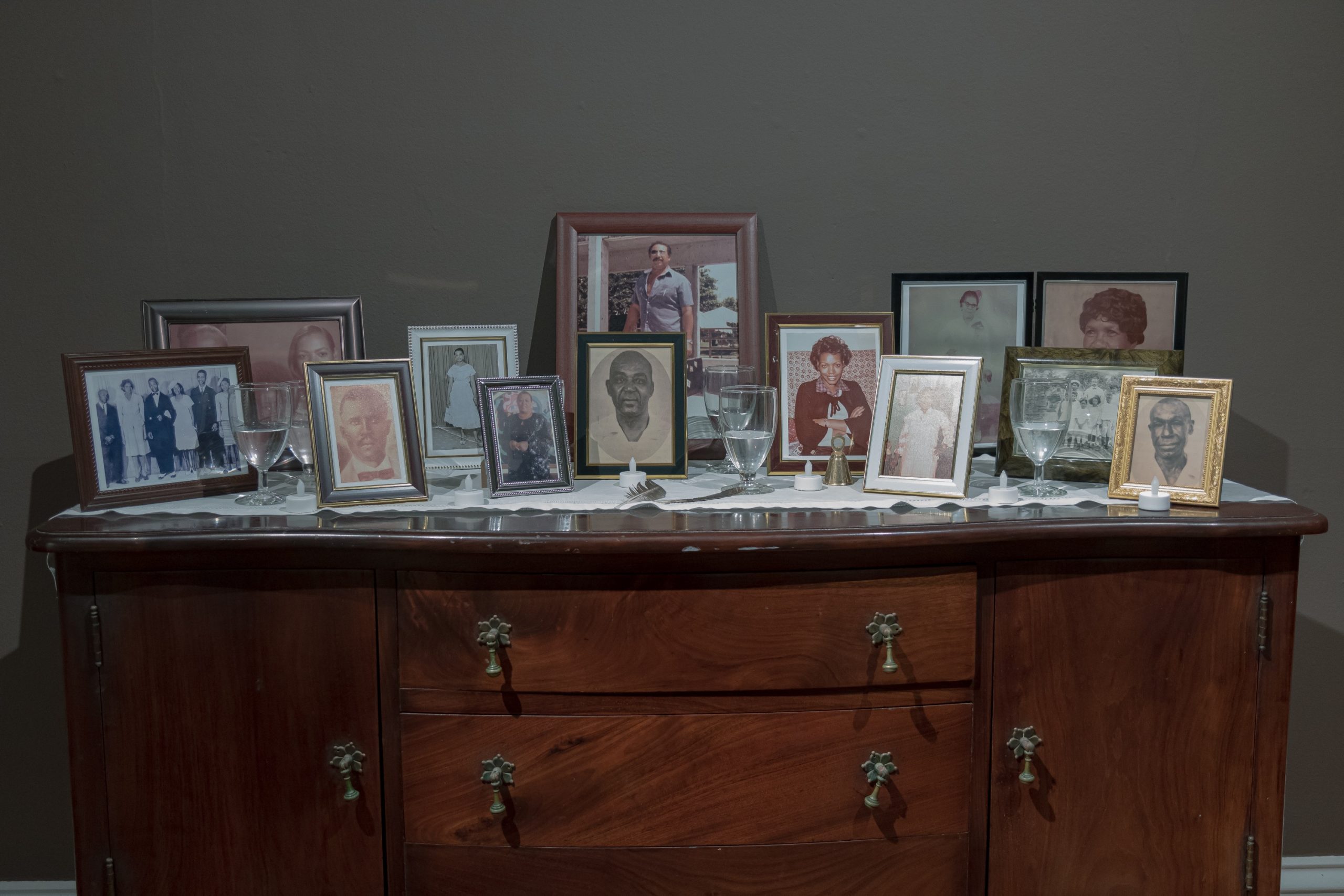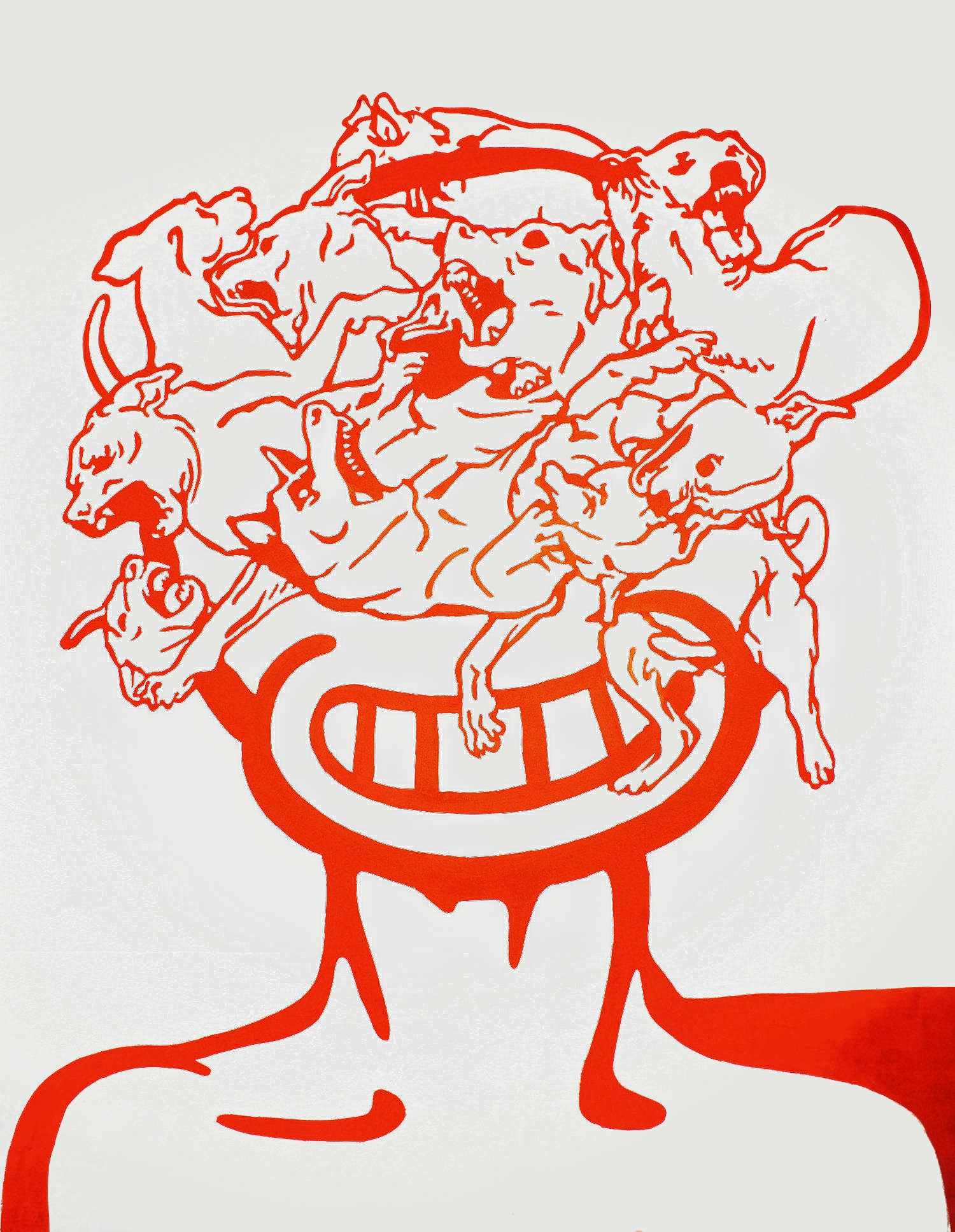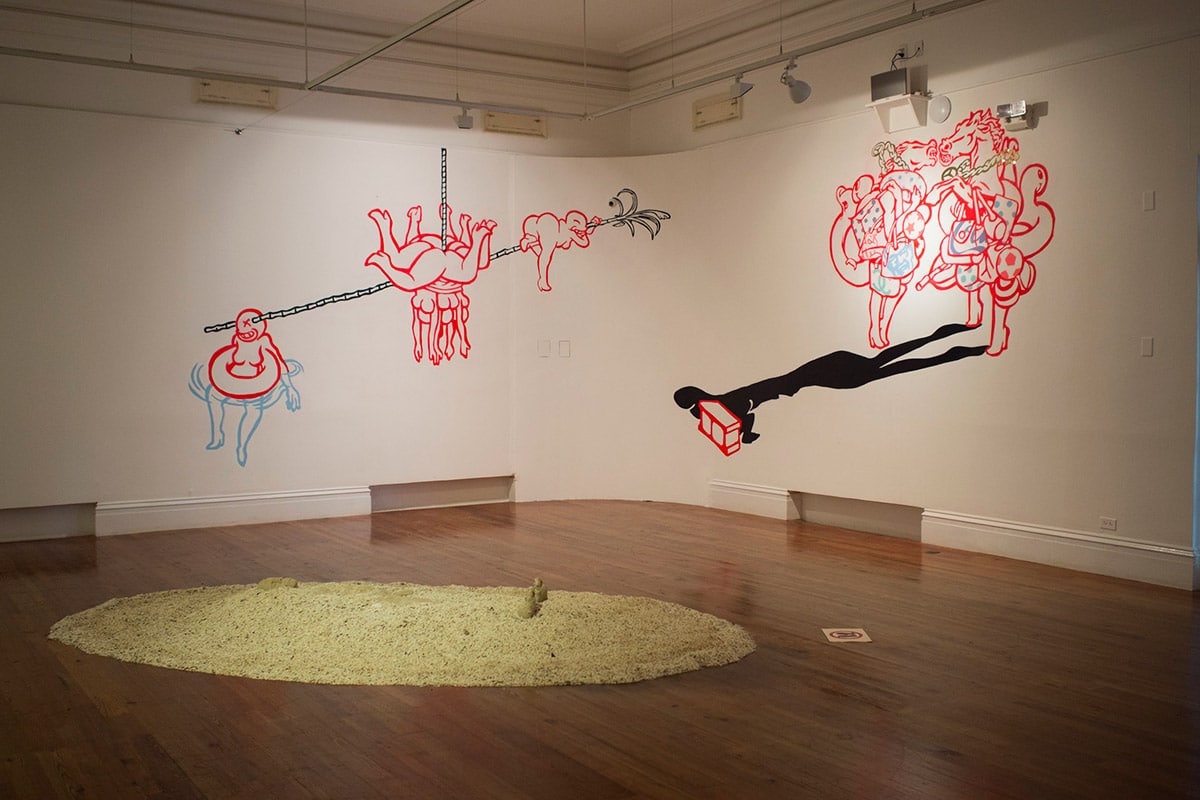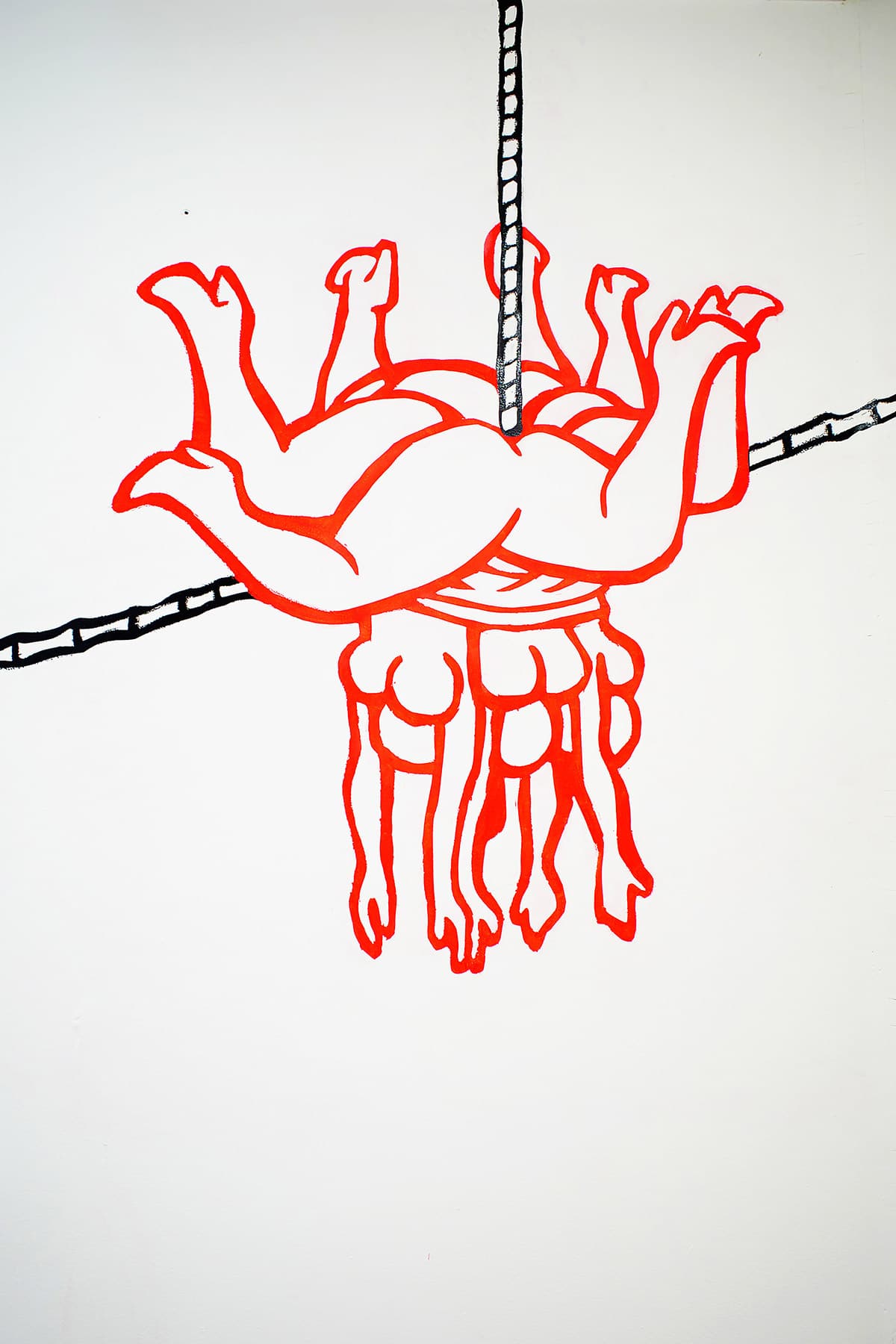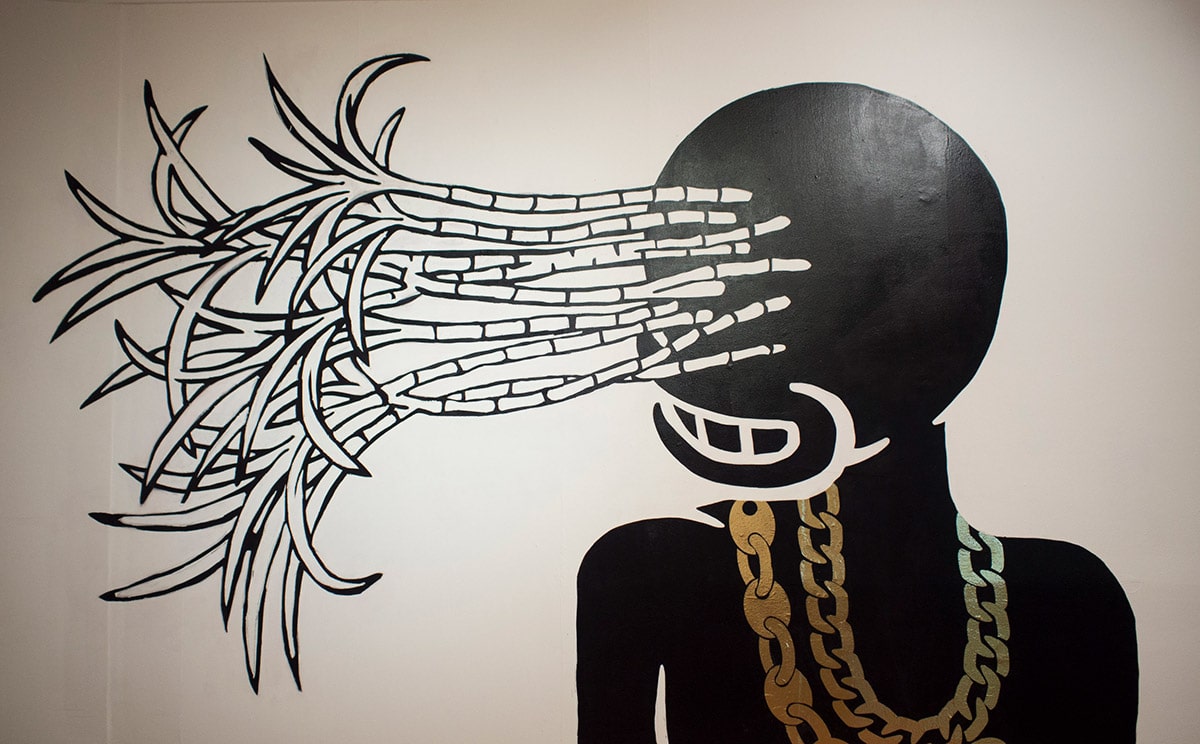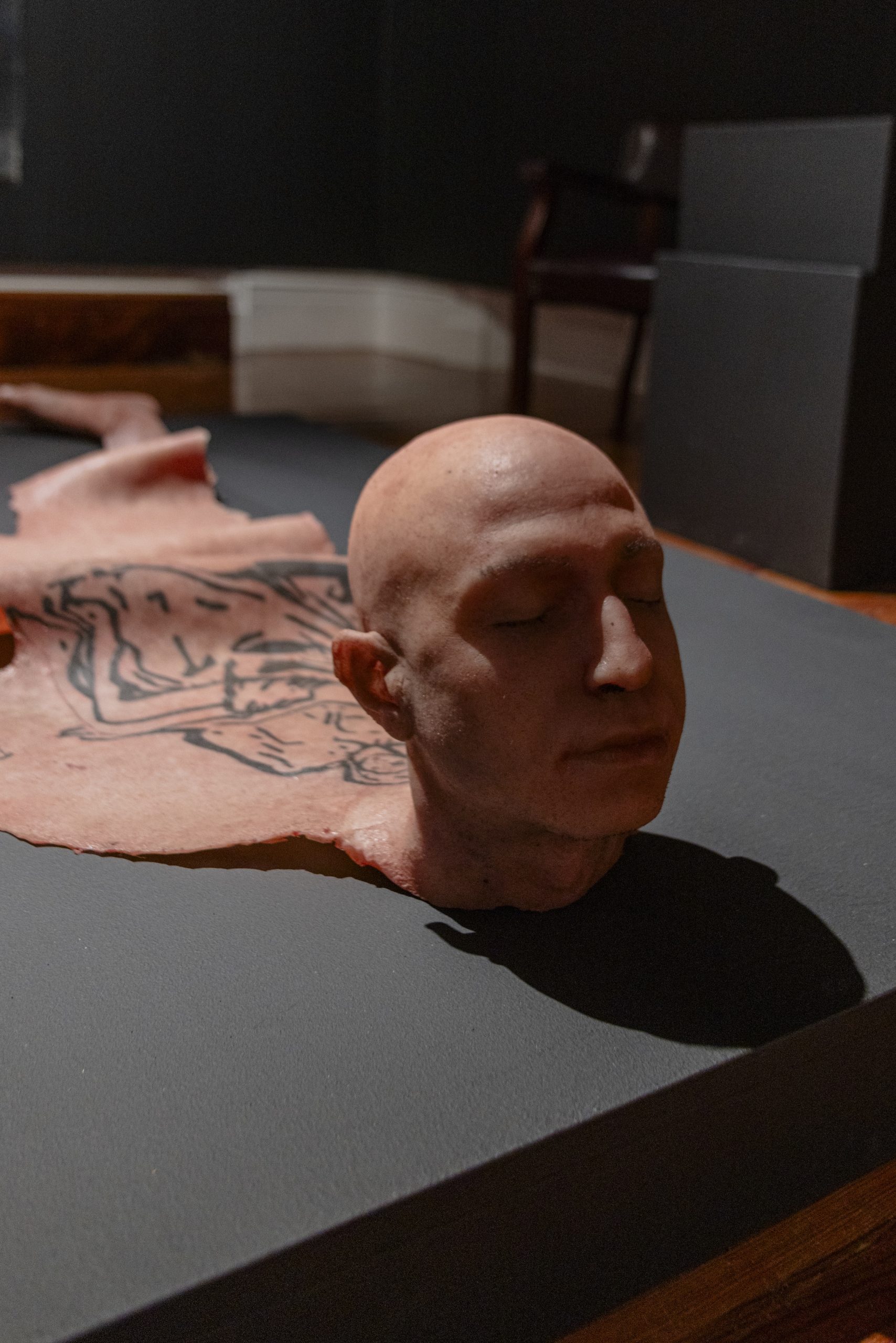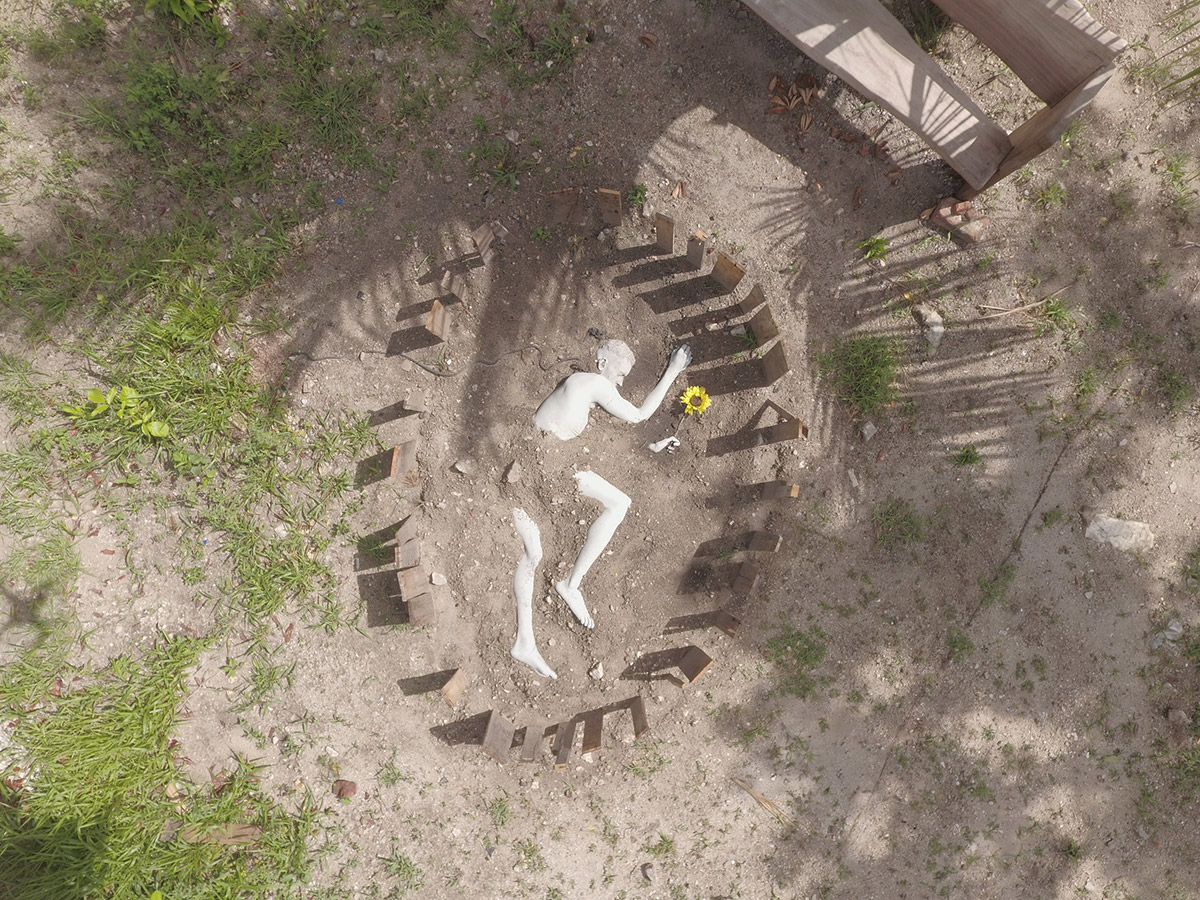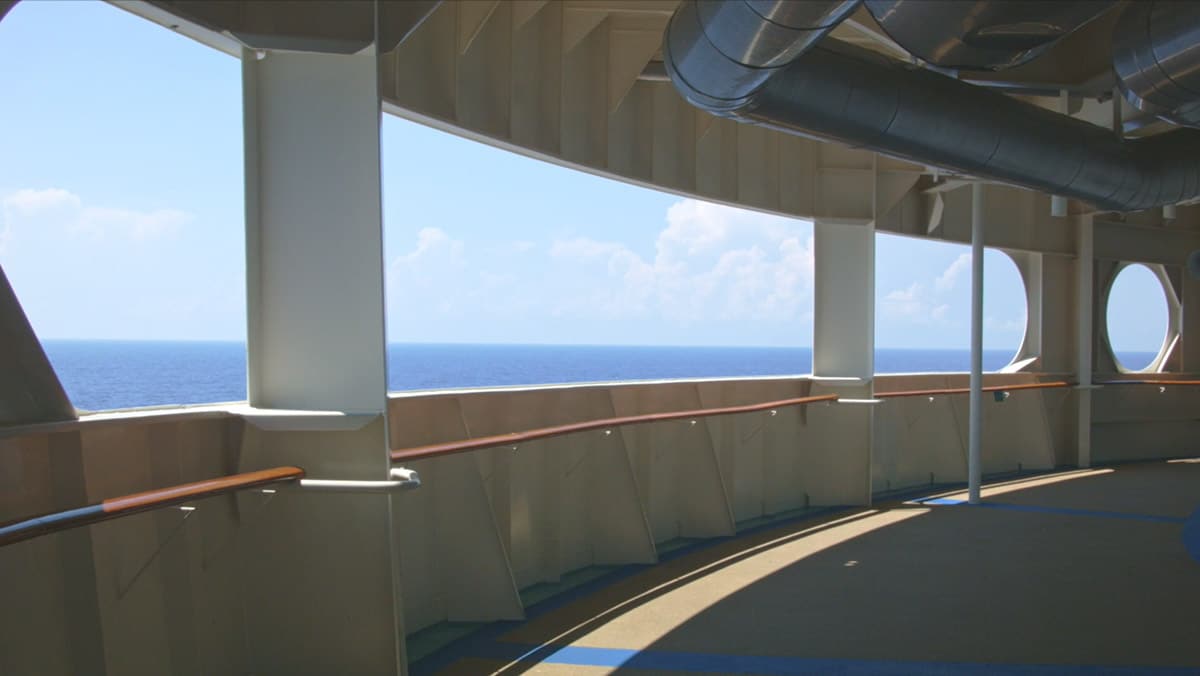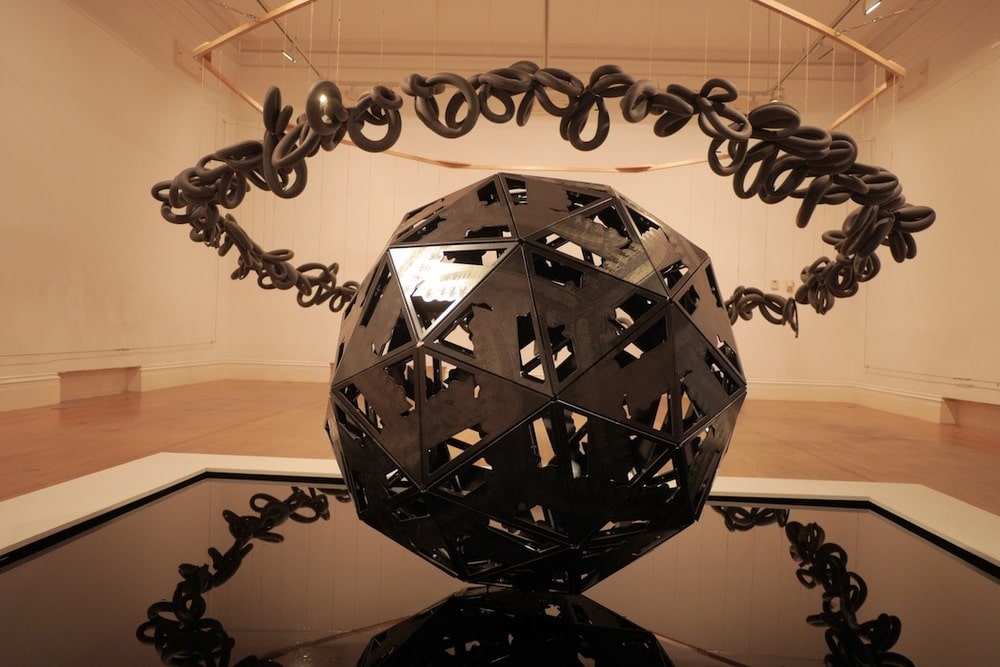Of Skin and Sand
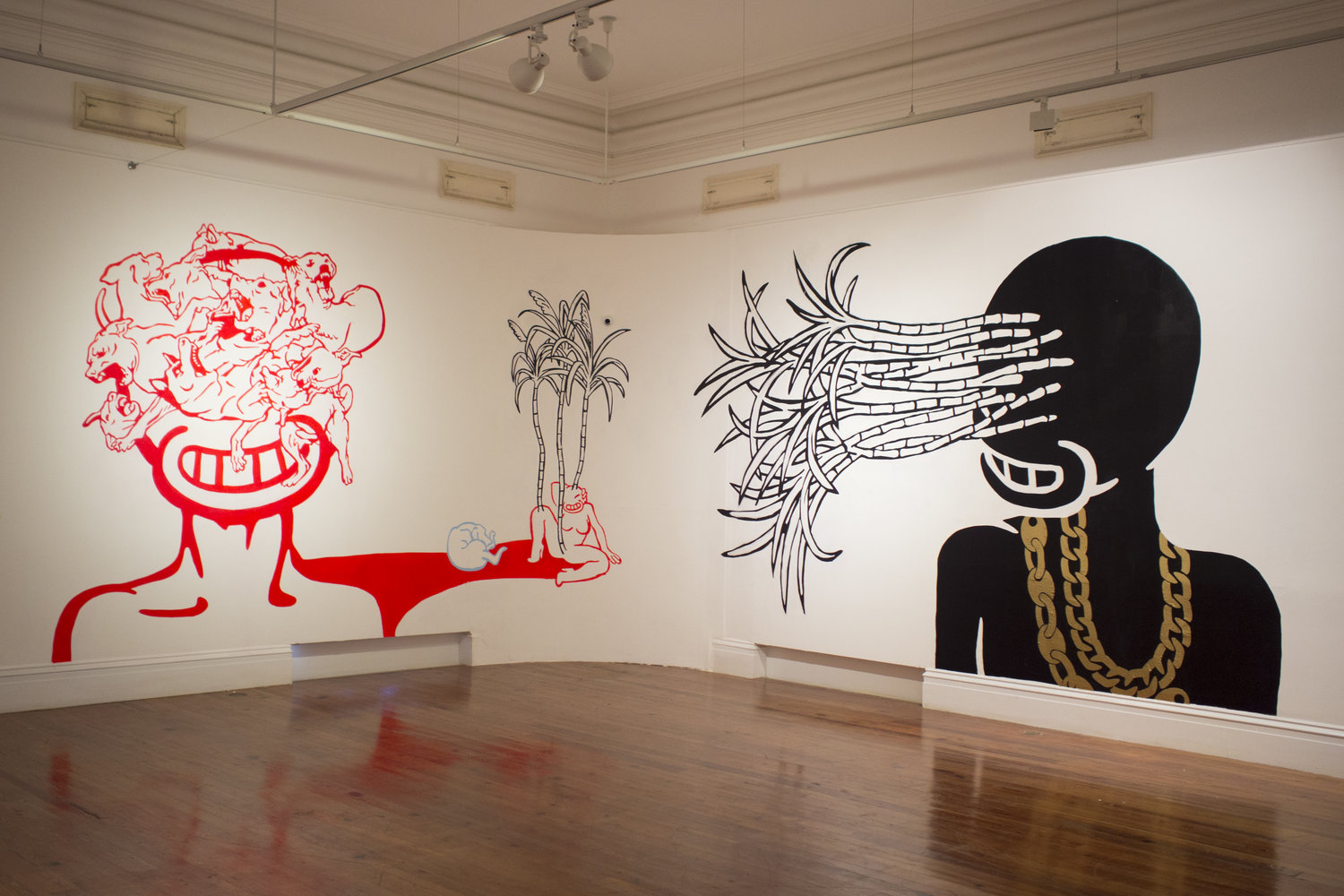
Overview
Dates
21 July–24 September 2017
Location
NAGB, Floor 2
T1 Gallery
Part of → Double Dutch · Series 5
Of Skin and Sand brings together Jamaican artist Leasho Johnson and Bahamian artist Edrin Symonette, each presenting distinct yet interwoven bodies of work. The exhibition probes questions of gender, masculinity, and sexuality within a Black Caribbean context. Developed onsite in the NAGB Ballroom, their individual installations engage in powerful visual dialogue, challenging social norms and the boundaries that shape them.
Leasho Johnson
Jamaica
Leasho Johnson (b. 1984, Montego Bay, Jamaica) was educated at Edna Manley School of the Visual and Performing Arts, where he graduated in 2009 with a degree in Visual Communication. Social commentary is central to Johnson’s practice, which often juxtaposes cartoon and realistic imagery to explore contradictions in Black life across the Caribbean and diaspora. Influenced by pop culture and graphic art, his work spans painting, sculpture, collage, street art, and digital media.
Edrin Symonette
The Bahamas
Edrin Symonette (b. 1986, The Bahamas) was raised on the island of Eleuthera. His work investigates identity through the act of construction, using material exploration to navigate the intersections of natural and manmade, traditional and experimental. Symonette has recently shifted toward process-based work, with an emphasis on how form, material, and concept communicate personal and collective histories.
Of Skin and Sand is curated by Holly Bynoe, Chief Curator.
Curatorial statement
Holly Bynoe
Chief Curator
Of Skin and Sand brings together Jamaican artist Leasho Johnson and Bahamian artist Edrin Symonette who have developed individual projects that speak towards issues of gender constructs, masculinity and sexuality within a Black Caribbean context. Boundaries are reinforced and broken down through societal and practical experimentations as they work in the NAGB’s Ballroom to develop unique installations that dialogue with each other in confrontational and powerful ways.
Symonette will continue to develop and refine his body of work that our public has come to know very well with the recent community project Residues of a Colonial Past, which was hosted in the museum’s Sculpture Garden and then exhumed for the Project Space earlier this year.
With The Ballad of Deangelo Johnson for Quakoo Street, Symonette extends and regenerates new interest in the questions of how normative roles and performativity of hyper-masculinity persists and thrives within the Bahamian landscape; the actions that allow certain behaviours to exist; like machismo and chauvinism, while denouncing the honesty and necessity of black male vulnerability and care within our society. This ballad personifying this “inner city” living will be expanded into a poem painted on the wall adjacent to the sculpture. Bahamian poets Deangelo Whyms and Tanicia Pratt are co-creators of this (ballad/poem) providing both male and female perspectives. Johnson, who works in various public and private spaces across Jamaica and the wider African diaspora, will continue to develop his ongoing bodies of work started in Aruba at Caribbean Linked in 2014 with Promised Land, to the most recent installation of Belisario & the Soundboy at NLS Kingston, to the powerful In-a-the-middle installation at Devon House for the 2017 Jamaica Biennale.
Johnson, a prolific and engaged trickster, will produce Playing the Fields, a project that fuses his love for pop culture, dancehall and the complexities of black identity into an illustrative battlefield, calling to life an evocative landscape of vulnerable bodies and the emotional-scape of the dangers of coming into one’s understanding of self. Attacking the dark underbelly of misogyny and how the stronghold of patriarchy has altered male-female relations, the dancehall figure, which is ubiquitous in Johnson’s practice, collapses and is enveloped by the landscape allowing for freedom and for greater fluidity between the binaries that stiffen, reduce and homogenise our space. This project further explores the development of stereotypes through the lens of race: what does it mean to be a black male figure within the contemporary landscape? How is one viewed as one hides behind stereotypes, and what does freedom look like when we choose to confront the breaking down of these labels? Johnson and Symonette’s work creates small moments for us to think about the ramifications of monolithic and single narratives. They give space to identities that are more complex than the colonial subjects that we often tout ourselves as being. Within this maze of refining our personal and social relations, we also look at the way in which intersectionality embraces the fluidity natural to our Caribbean lives.
Edrin Symonette
Edrin Symonette was born in 1986 and grew up on the rural island of Eleuthera in the Bahamas. Edrin’s work focuses on communicating ideas through the process of construction. Solving each unique problem through the exploration of material and concept is of utmost importance. It is through this juxtaposition of natural and unnatural, traditional and non-traditional that he believes his interpretation of identity and beauty in the world is satisfied. Recently, Symonette’s work has moved away from traditional content and implementation, and he is now focused on communicating his ideas through a process. Solving each unique problem through the exploration of material and concept is of utmost importance. It is through a juxtaposition of natural and unnatural, traditional and nontraditional, that he believes his interpretation of beauty in the world is satisfied.
Leasho Johnson
Leasho Johnson was born in Montego Bay, Jamaica. Educated at Edna Manley School of the Visual and Performing Arts, he graduated in 2009 with a degree in Visual Communication. Social commentary is an integral part of his work. Johnson believes the contradictions that he encounters living in Jamaica speaks volumes in relation to the black experience in the Western hemisphere. He often juxtaposes cartoons with realistic imagery since the approachable nature of cartoons enables him to break down contentious, often disturbing issues and make them seem harmless, even comedic, and in the end more palatable. The idea that cartoons are to the imagination what realism is to representation is of particular interest to the artist, and he enjoys intersecting these approaches in his practice. By fusing or blurring the tension points of these styles to pull on something that lives in both the mind and reality, the artist attempts to use art as a vehicle to cross social boundaries and add another layer to black representation in fine art. His works are influenced by pop culture and various graffiti/graphic art styles and spans the mediums of paintings, collage, sculpture, street art and digital art.
Double Dutch supporters argue that the concept of bringing local, regional and diasporic-based artists together to work with a group of ideas personal, political and otherwise is crucial to the development of a contemporary Bahamian identity. These artists are often divided linguistically and geographically but are united by common historical, economic or practice-based conditions. For this reason, the project attempts to create and maintain ties throughout the Caribbean, the wider diaspora, with the NAGB as pilot and conduit.
In context
Double Dutch pairs a Bahamian artist with an artist from the wider Caribbean to produce ambitious, collaborative bodies of work. The programme supports cross-cultural exchange, highlighting shared histories, creative practices, and sensibilities across the region and its diaspora.
